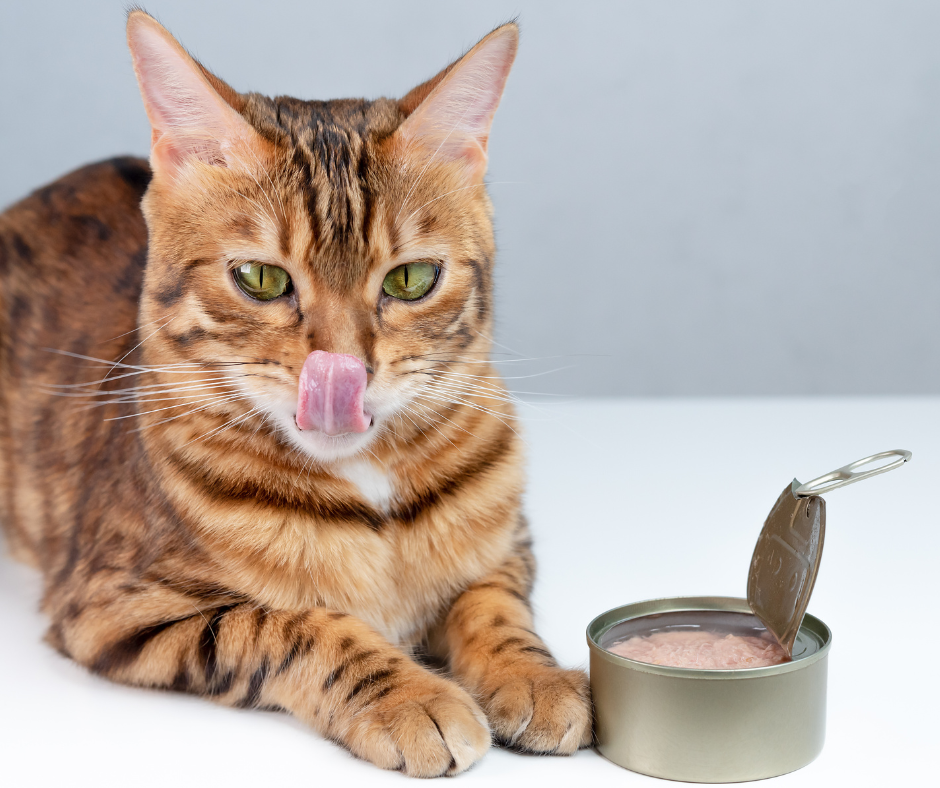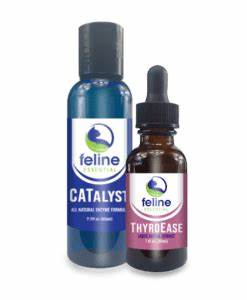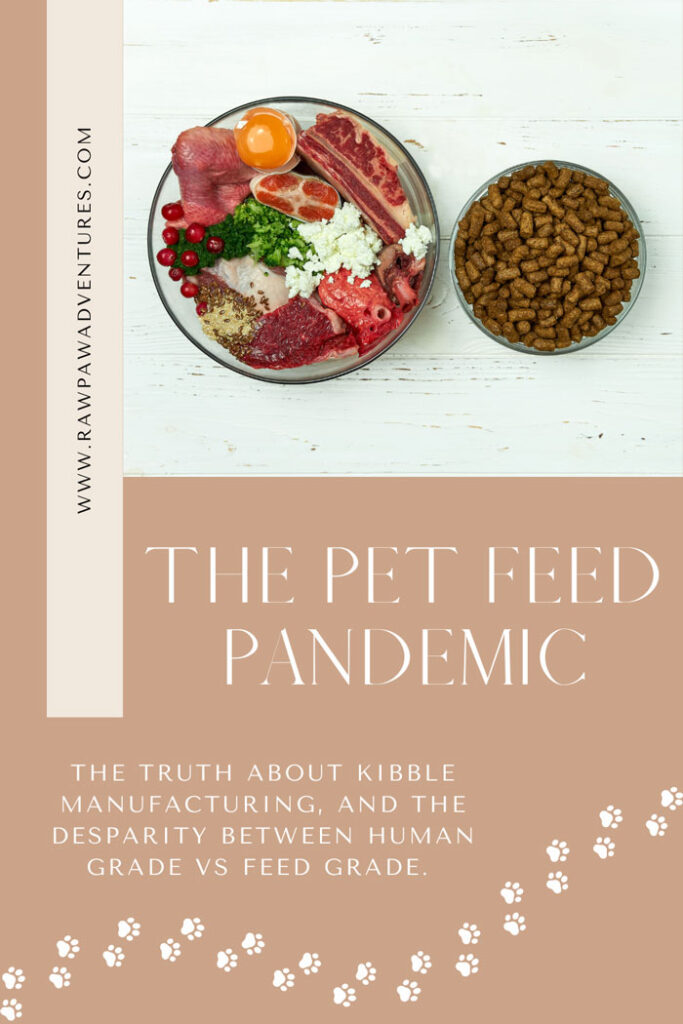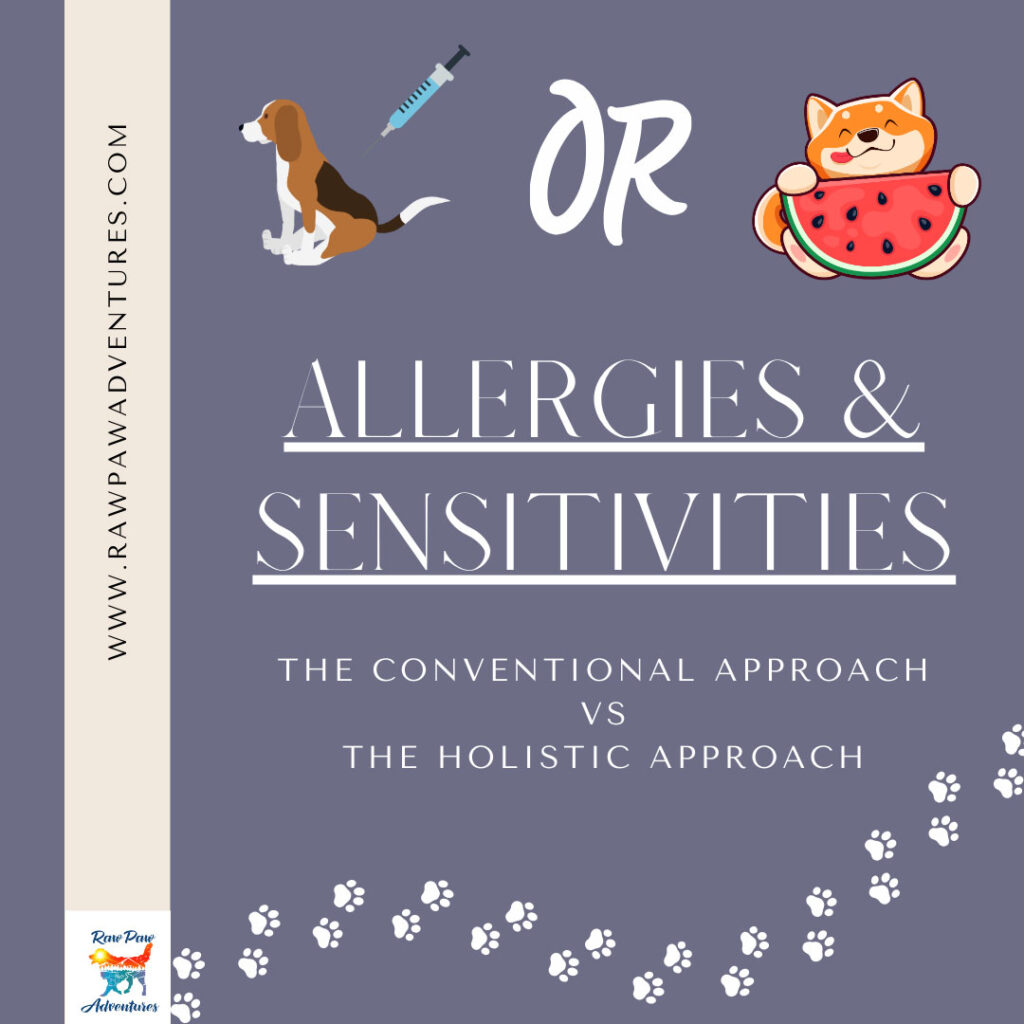
If you’re a devoted cat parent seeking natural, holistic alternatives for your feline’s health, understanding hyperthyroidism is essential. This common yet complex endocrine disorder has become an epidemic among cats, but with awareness, the right nutrition, and a proactive approach to environmental health, there’s a lot we can do to help our kitties with one of the most common endocrine disorders they can develop.
What Is Hyperthyroidism in Cats?
Hyperthyroidism is a condition in which a cat’s thyroid gland produces excessive thyroid hormone, primarily thyroxine (T4). This hormone regulates many bodily functions including metabolism, and when levels are too high, it throws the entire body out of balance. Once T4 starts rising out of control, the body stops producing TSH, which stands for thyroid stimulating hormone. TSH is what tells the thyroid to crank out the actual thyroid hormone (T4), so of course if there is too much T4 then we no longer need TSH to go tell the thyroid to make more- makes sense right?
Now you know the classic picture of laboratory abnormalities with hyperthyroidism: high T4 paired with low TSH. But what are the actual symptoms?
Common symptoms include:
- Weight loss despite a healthy or increased appetite
- Hyperactivity or restlessness
- Increased thirst and urination
- Vomiting or diarrhea
- Poor coat condition
- Elevated heart rate
- Vocalization or behavioral changes
While it’s commonly seen in cats over the age of 10, the numbers are increasing at alarming rates. In 1980, the condition was virtually unheard of—just 1 in 200 cats were affected. Today, the numbers have skyrocketed to 1 in 10 or even 1 in 7 cats being diagnosed with hyperthyroidism. So what the heck has changed?
The Hidden Contributors to Feline Thyroid Disease
🔥 Environmental Toxins & Flame Retardants
A groundbreaking study by Oregon State University showed that flame retardants in household furniture are a major contributor to thyroid disease in cats. Since the 1980s, flame retardants have been commonly added to sofas, carpets, and bedding—and cats, who spend a lot of time lounging (and grooming), are constantly exposed.
Because cats walk barefoot and groom constantly, they’re absorbing and ingesting these toxins far more than we do. Their small size and efficient grooming habits mean even minimal exposure can have a magnified effect.
🛑Ways to decrease these exposures are to place blankets or washable covers on furniture and offer your cat organic beds away from high-risk surfaces. You can also look for organic couches and other furniture if your lifestyle (and pocketbook) allow it.
🧴 Endocrine Disruptors in Household Products
The synthetic fragrances and harsh chemicals in many common products—cleaners, candles, plug-ins, and sprays—contain endocrine disruptors that wreak havoc on the delicate hormonal balance of our pets.
Just as humans are experiencing rising rates of thyroid disorders, autoimmune conditions, cancer, and hormonal imbalances due to chemical exposures, our cats—smaller and more sensitive—are like the canary in the coal mine. They’re suffering from the disorders that we’re likely to develop down the line, they simply show it sooner because of their smaller size and detox pathways.
🛑 Turn this around by ditching the toxic cleaners and scented products. Opt for truly natural alternatives that are safe for pets (and people!). There are many recipes for DIY cleaning products out there and some companies have less toxic alternatives- check out www.ewg.org to find some brands.

🥫 Canned Food & Packaging Chemicals
Even if you’ve swapped dry kibble in favor of canned food, you might unknowingly be contributing to thyroid issues. Many canned pet foods—especially those with pop-top lids—are lined with BPA and other endocrine-disrupting chemicals that leach into the food. This is the exposure that frustrates me the most, because we think as pet parents that we’re making the better, healthier choice for our kitties by feeding them a moist food. And that’s true in terms of improved digestion and kidney function, but this specific issue with cans comes with potential consequences.
Even BPA-free alternatives aren’t always safe. Recent research suggests that the adhesives and inner coatings used in some “safe” cans still release harmful compounds.
🛑 My tip here is to feed human grade fresh food whenever possible, which could mean premade gently cooked or raw or DIY gently cooked or raw. However, if this isn’t possible for you, try to choose foods packaged in pouches or tetra packs, or rehydrate a human grade dry food such as freeze dried or dehydrated raw when possible.
🐟 Fish-Heavy Diets & Iodine Overload
Cats love fish—but feeding too much of it can be dangerous. Fish is high in iodine, and excessive iodine has been linked to thyroid dysfunction in cats. Additionally, fish-based diets often contain mercury and heavy metals, which strain the detoxification systems.
It’s not that having fish in the diet is the acute issue- it’s that you can’t seem to get away from fish no matter where you turn when it comes to canned cat products! Even if the main protein is chicken or lamb, somehow these non-fish-labeled foods often include fish derivatives. To make matters worse, these are usually low-quality fish higher in metals and other contaminants. Always check the ingredient list!
🛑 Limit fish-based meals to occasional treats if you’re feeding canned food to avoid bioaccumulation, and use high quality wild harvested small fatty fish as your fish proteins if feeding fresh food (my favorite include sardines, mackerel and herring).
Nutrition: The Foundation of Thyroid and Whole-Body Health
You can’t talk about thyroid health—or holistic healing in general—without emphasizing nutrition. A species-appropriate, moisture-rich diet can do wonders for supporting your cat’s metabolism, detoxification, and immune function, but that unfortunately isn’t as simple as opening a can twice a day.
Cats are obligate carnivores, meaning they thrive on high-quality animal proteins and do not require carbohydrates or plant-based ingredients in their diets. They need a mostly meat, bone and organ filled diet with minimal carb content for health and wellness.
When feeding a species appropriate diet, you’ll see:
- Better energy
- Healthier coat and skin
- Balanced weight
- Improved digestion and less litter box deposits
- Reduced anxiety and behavioral issues
All from switching to a fresh or raw food diet. If you want to learn more about that or give it a try, read my blog article on transitioning a cat to fresh food. For most, it’s not an easy or instantaneous switch. Cats are imprint eaters and you need to be patient and move slowly when introducing a new food to prevent food avoidance. Mine took nearly a year to transition from kibble to raw, but it was well worth it in the end!
Natural Support for Hyperthyroid Cats
If your cat is already experiencing signs of hyperthyroidism, there are gentle, holistic tools to support their healing if the conventional options of Methimazole or radioactive iodine aren’t what you’re looking for. Thankfully, the Two Crazy Cat Ladies, Jae & Adrienne, have us covered!

🌿 THYROEase: An Herbal Remedy for Feline Hyperthyroidism
THYROEase is a carefully formulated liquid herbal supplement for our kitties with hyperthyroidism that helps:
- Balance overactive thyroid function
- Ease symptoms of hyperthyroidism
- Support the endocrine system naturally
This remedy can be especially effective if started early and used alongside dietary and environmental changes.
✨ CATalyst: Whole-Body Organ Support
Another great tool in the holistic kit is CATalyst, a supplement that supports detoxification, kidney function, and systemic inflammation—making it a powerful companion to THYROEase, particularly for senior cats.
🐾 Pro tip: Start with microdoses of liquid supplements to ease picky eaters into new flavors.
What Else Can You Do?
The takeaway here is that there are a lot of things that we can do as cat parents to decrease the risk of developing hyperthyroidism and to decrease the severity of symptoms if our kitty is already diagnosed.
- Run a full thyroid panel: Ask your vet for a comprehensive test including TSH, T3, T4, free T4, and reverse T3 to get a full picture.
- Get annual blood work (or bi-annual for senior cats): Early detection is key.
- Reduce toxin exposure: From air fresheners to fabric sprays—less is more.
- Minimize stress and support enrichment: Anxiety affects hormones too. Provide safe spaces, playtime, and enrichment to promote calm and connection.
Prevention Is Powerful
Hyperthyroidism in cats isn’t just bad luck—it’s a wake-up call. A call to clean up our pets’ diets, reduce toxic load, and lean into the healing power of nature. By switching to safer food, minimizing endocrine disruptors, and using natural remedies, we can give our feline friends longer, healthier, and happier lives.
And for those already facing a diagnosis, know this: there are natural options. You don’t have to go it alone, and you don’t have to accept a lifetime of pharmaceuticals if that doesn’t feel right for your cat.
Want to learn more or try THYROEase?
Visit TwoCrazyCatLadies.com for holistic cat health resources, supplements, and support! Jae & Adrienne are phenomenal and have so many resources, all at your disposal on their website!



